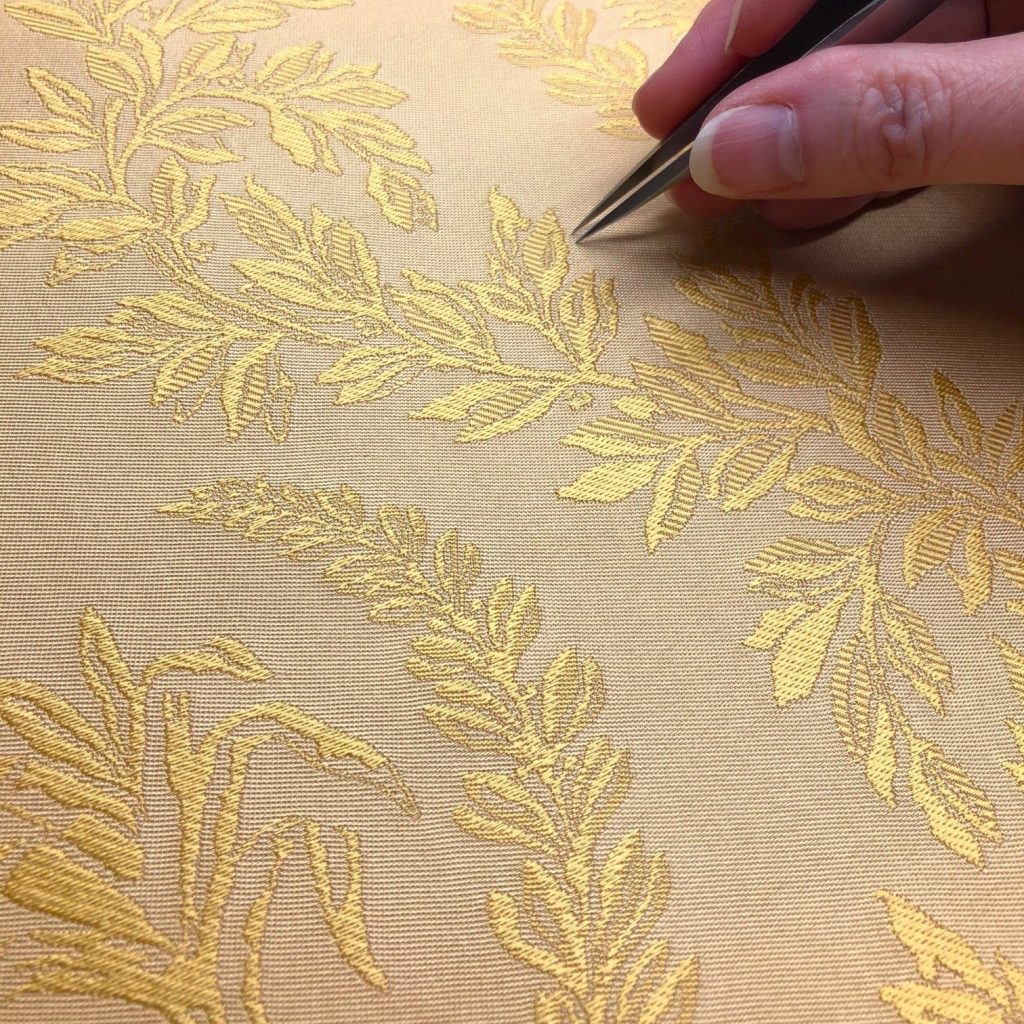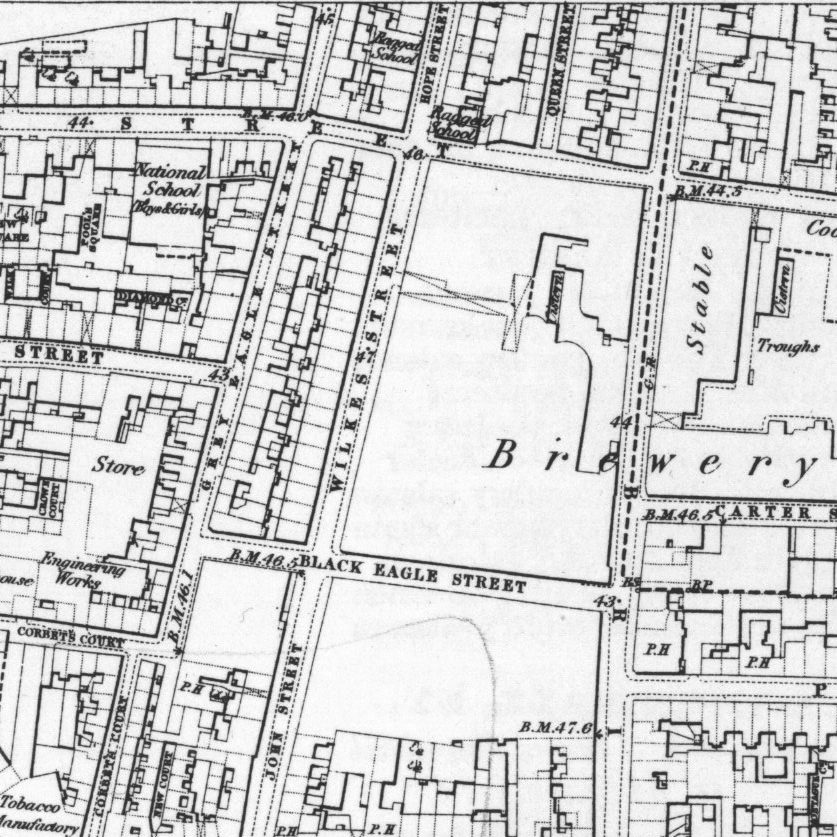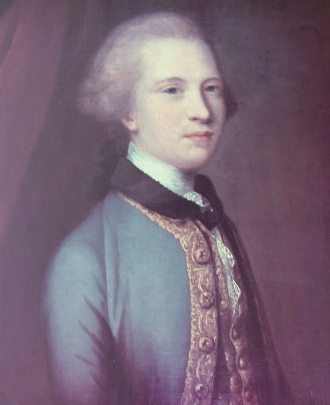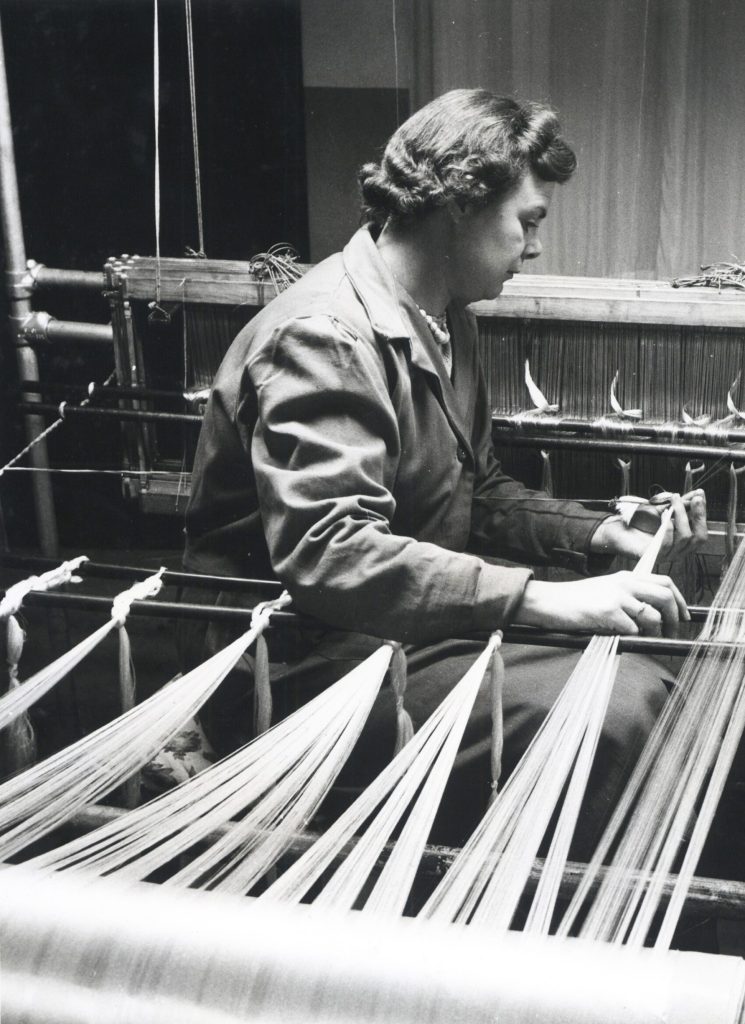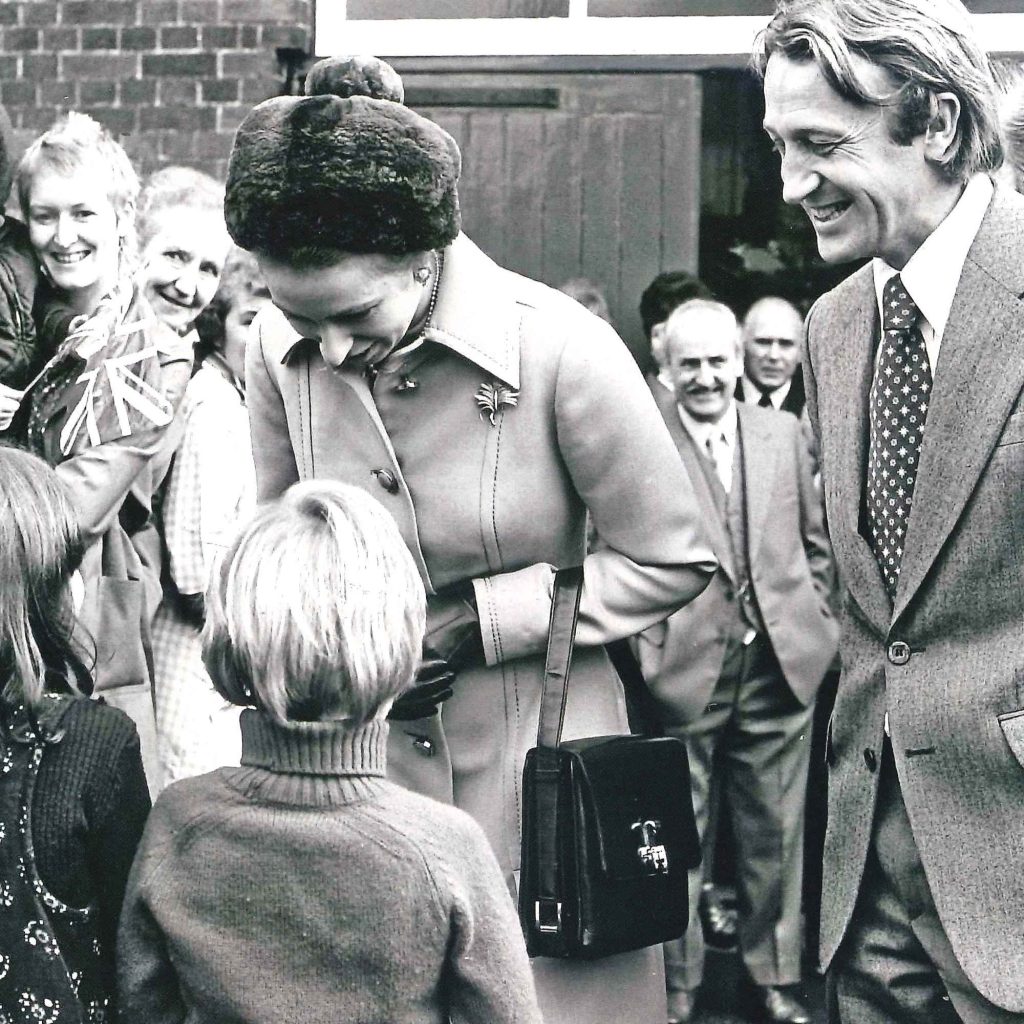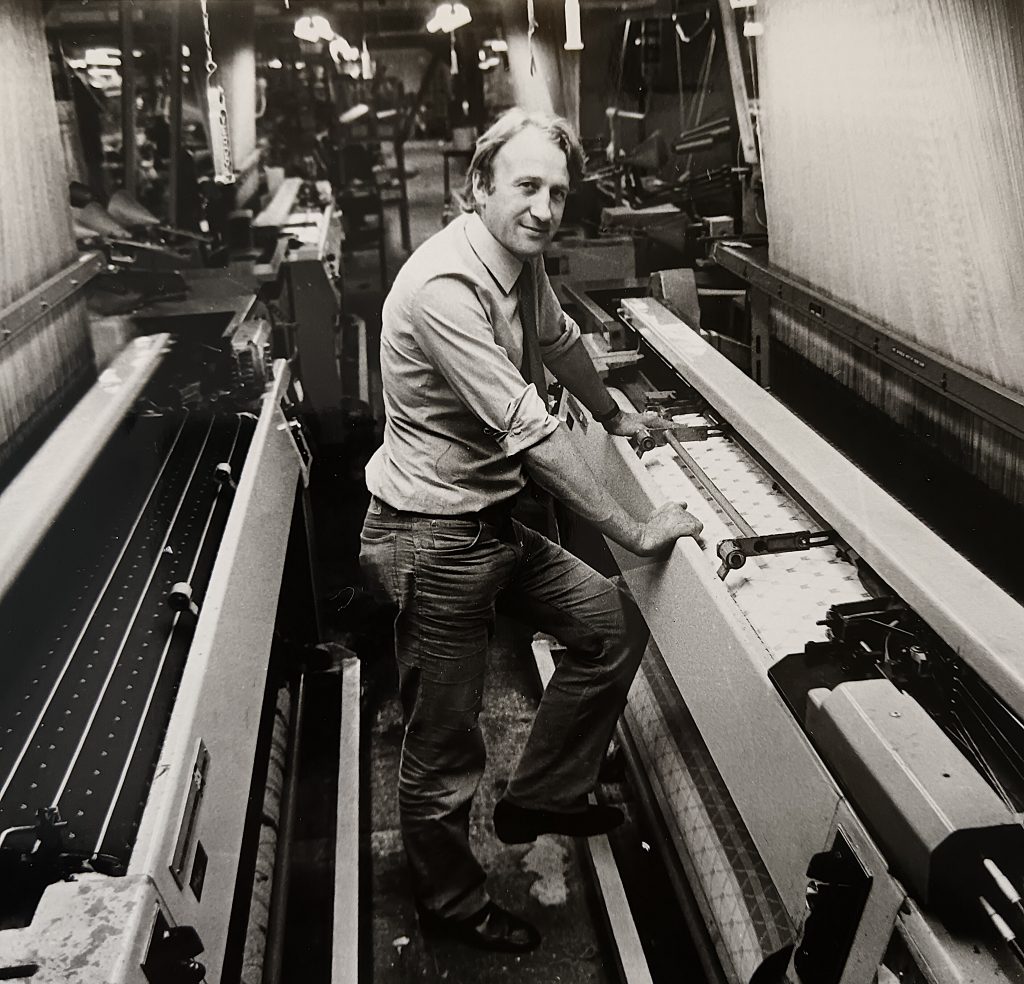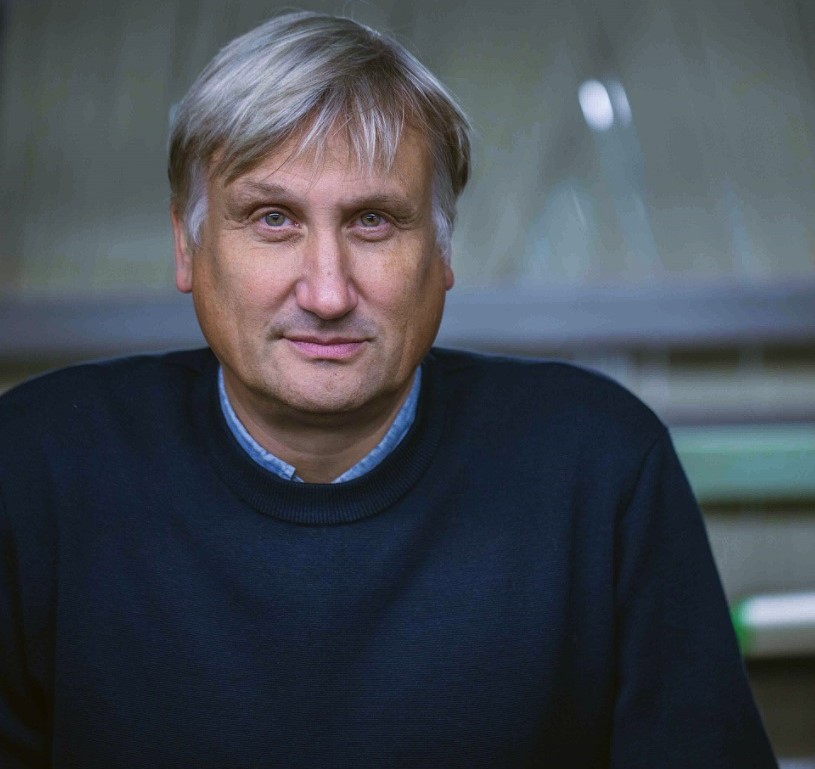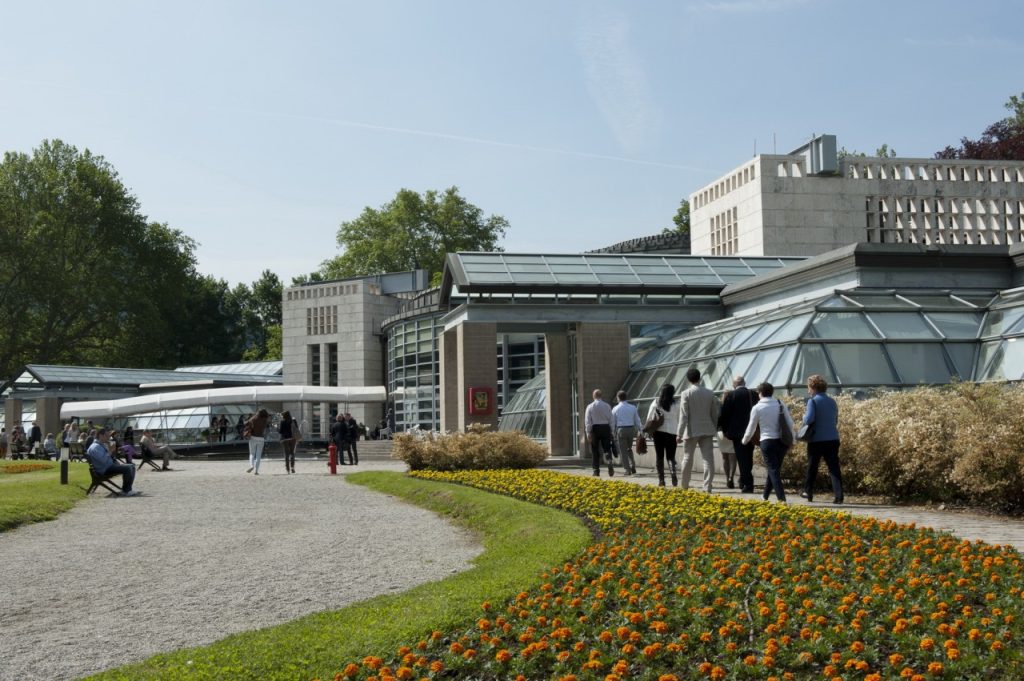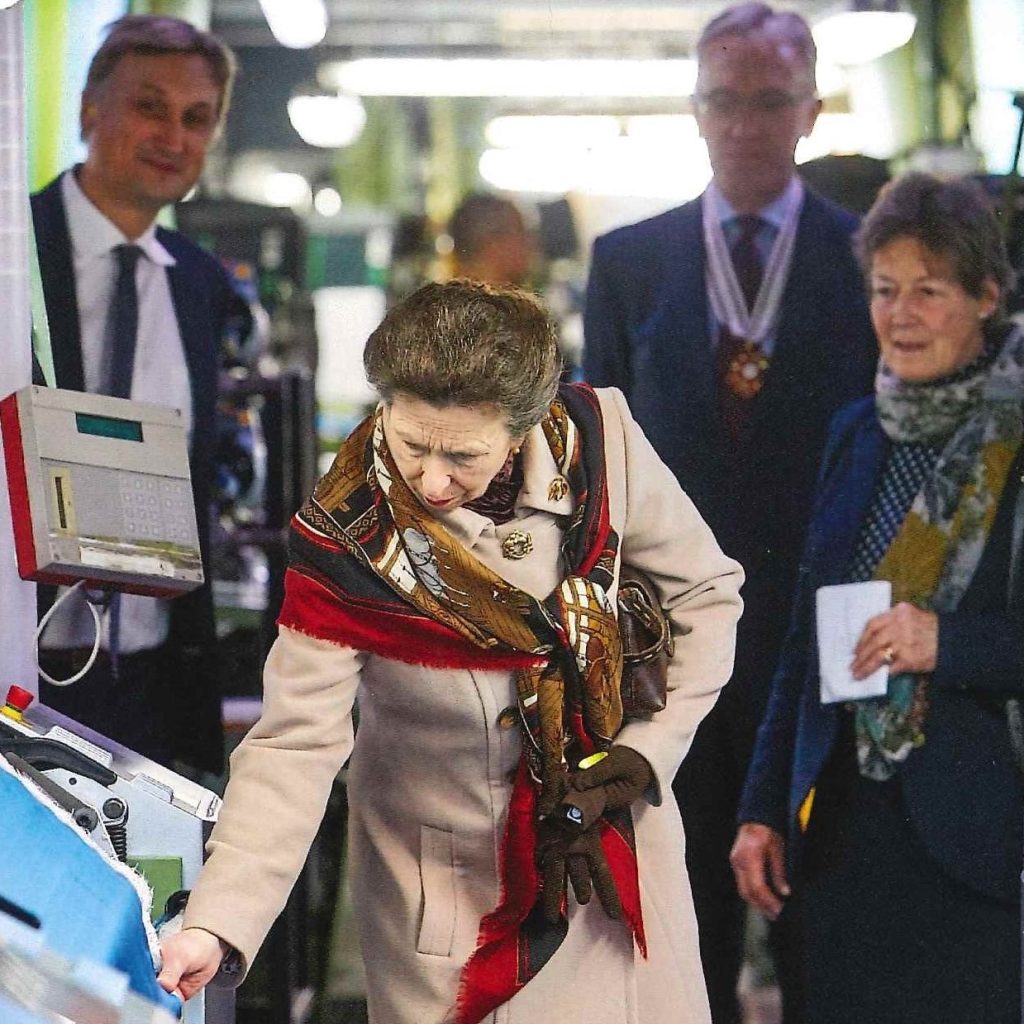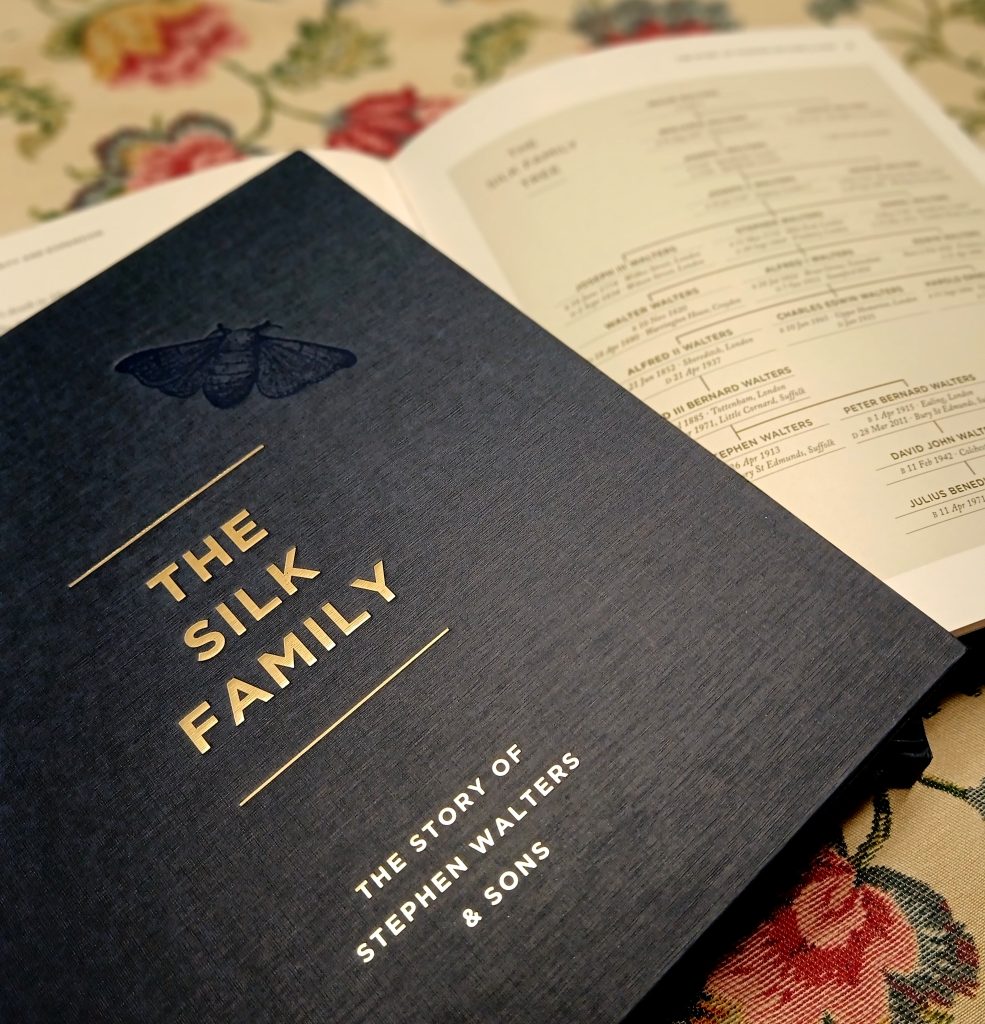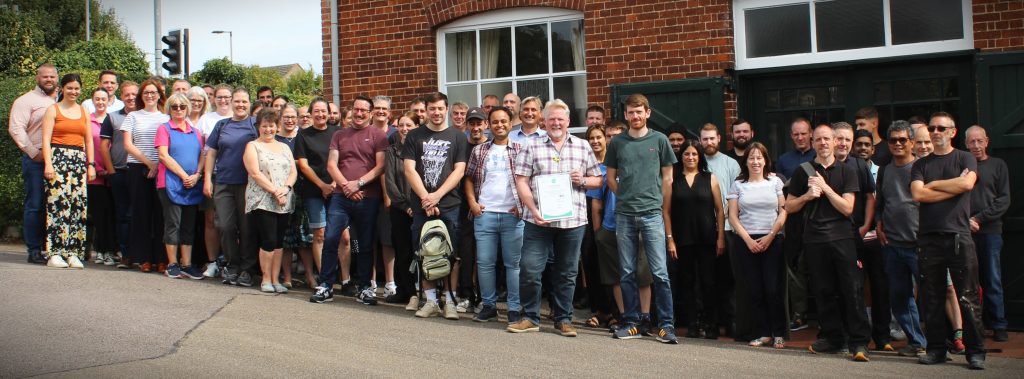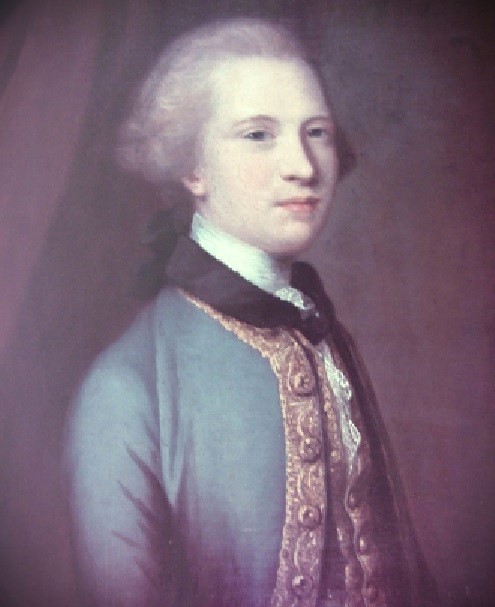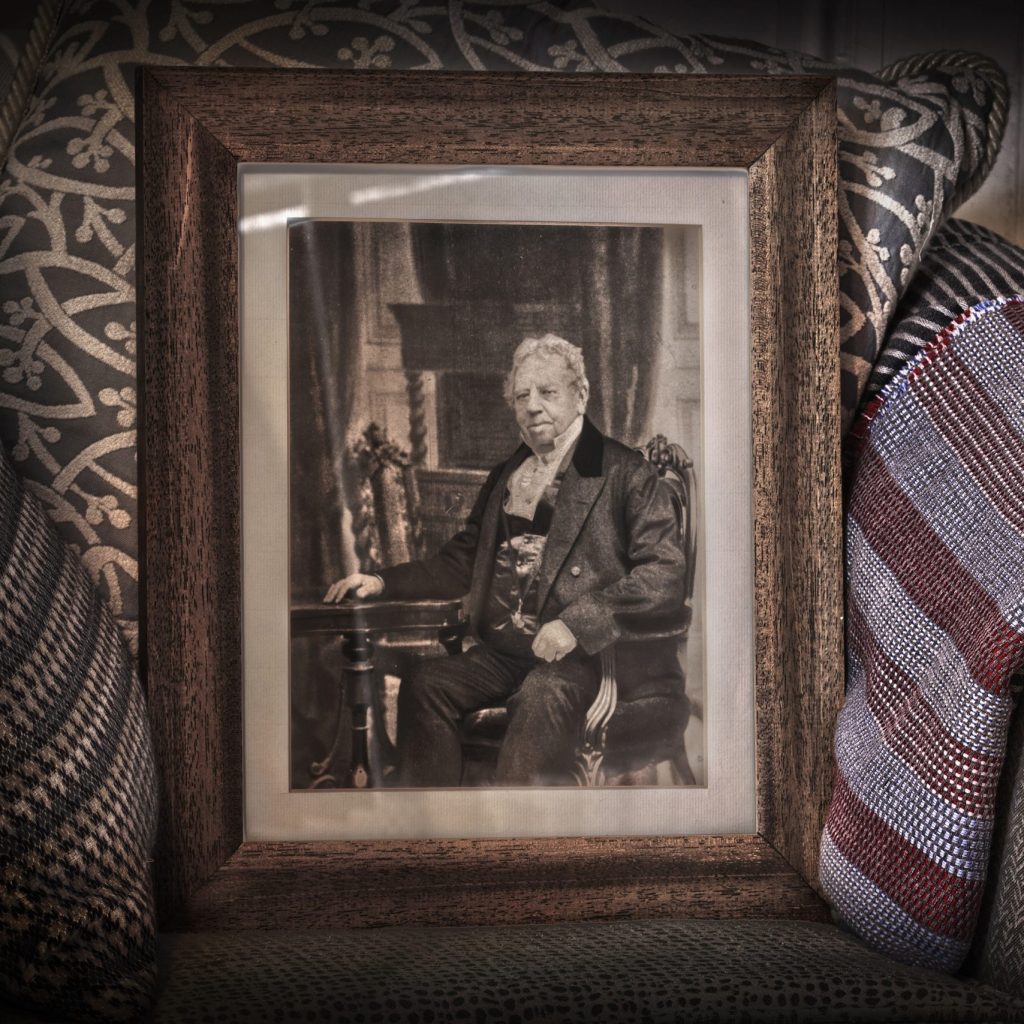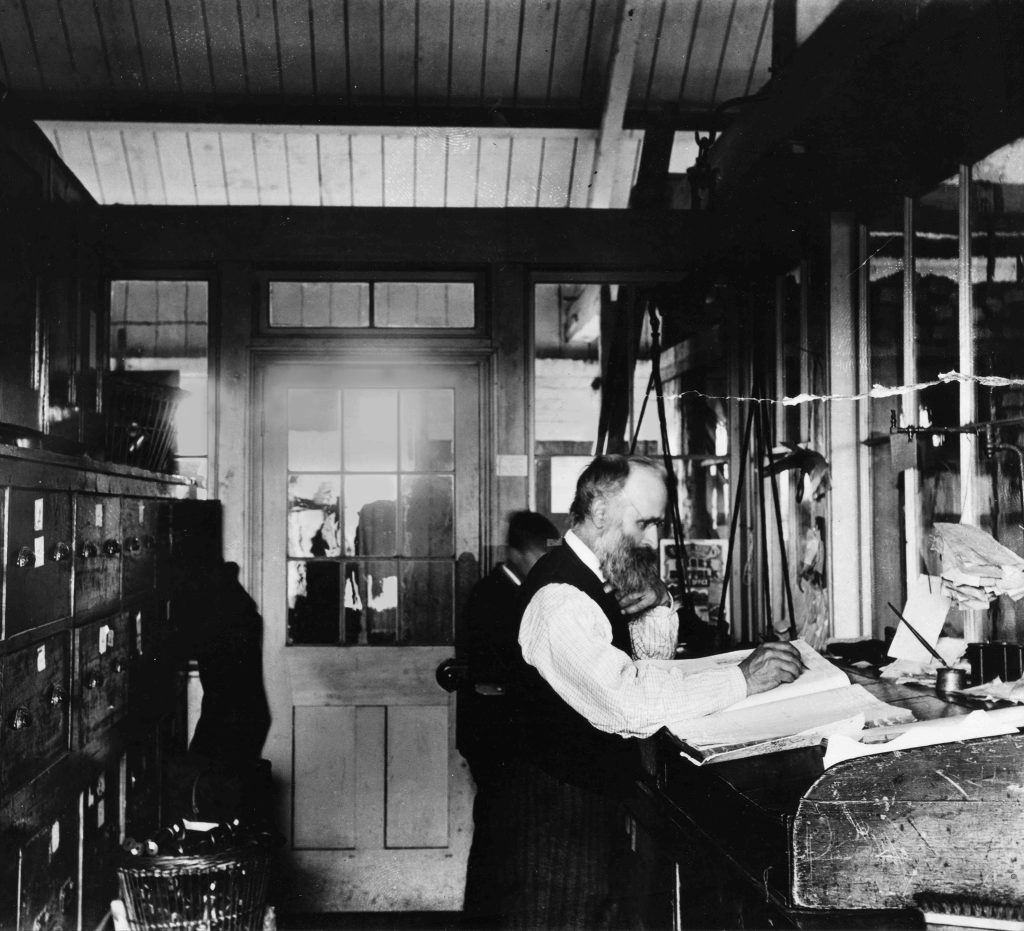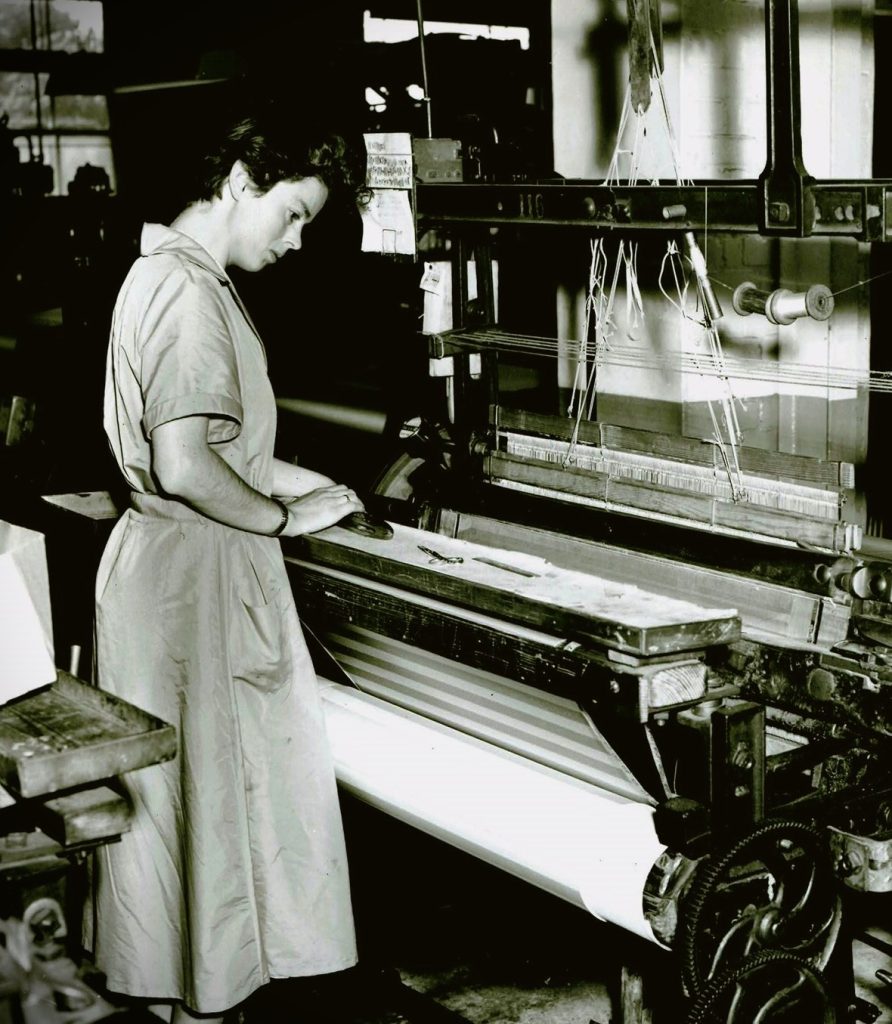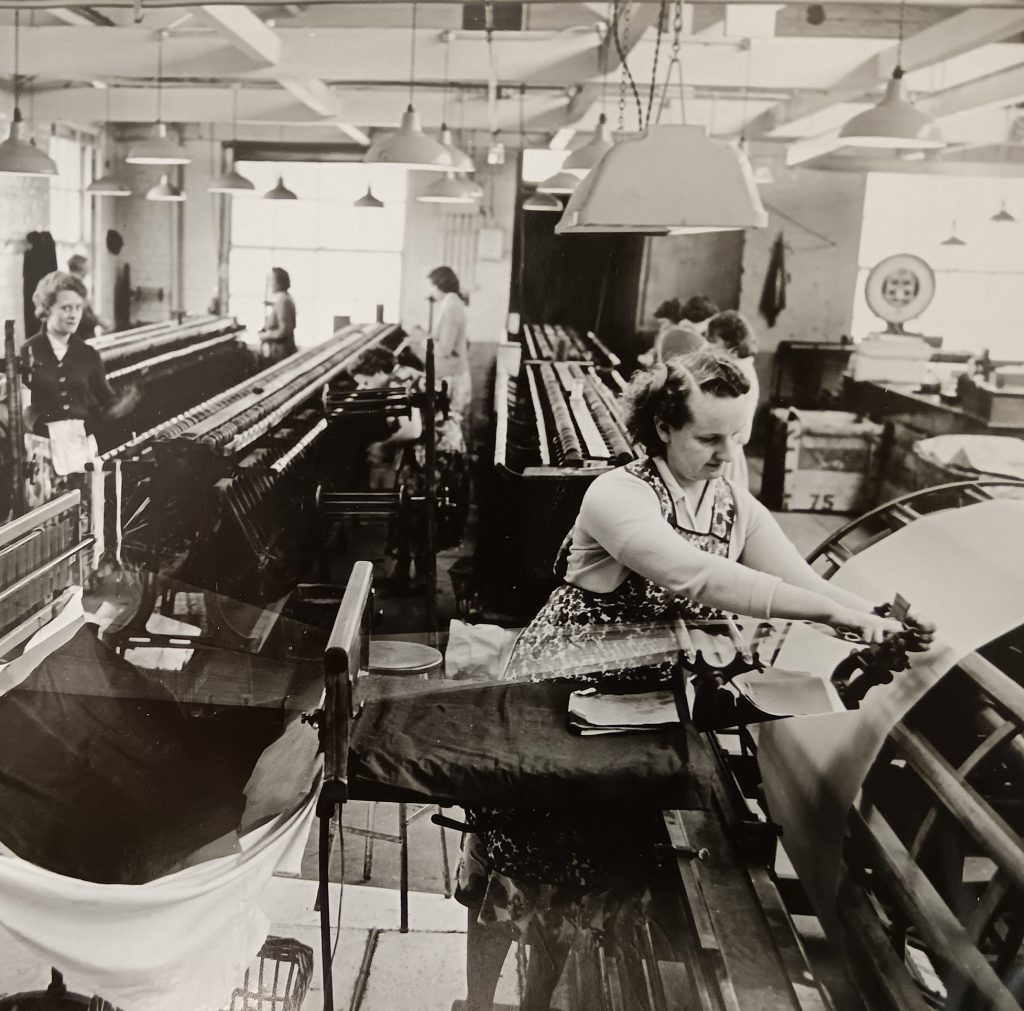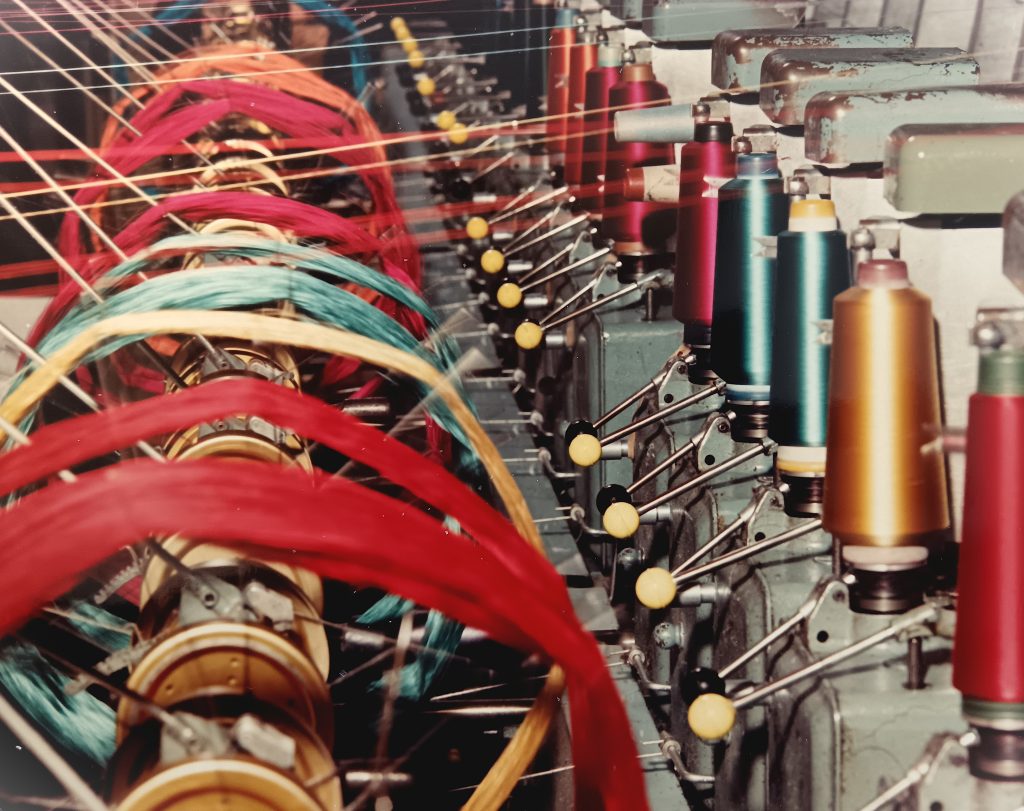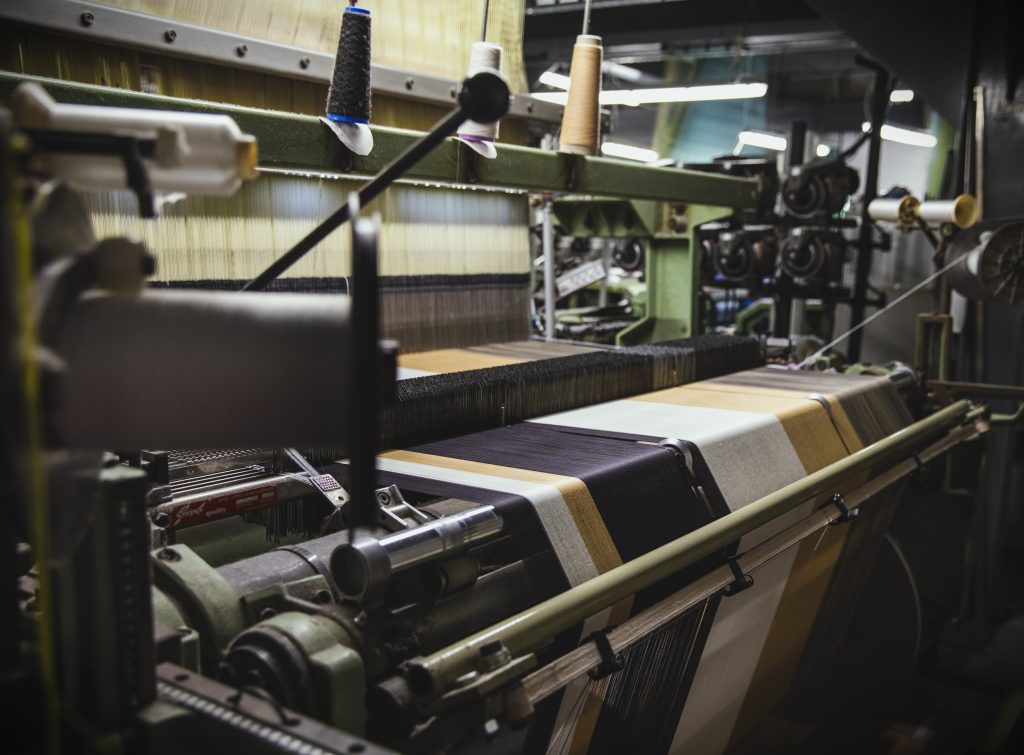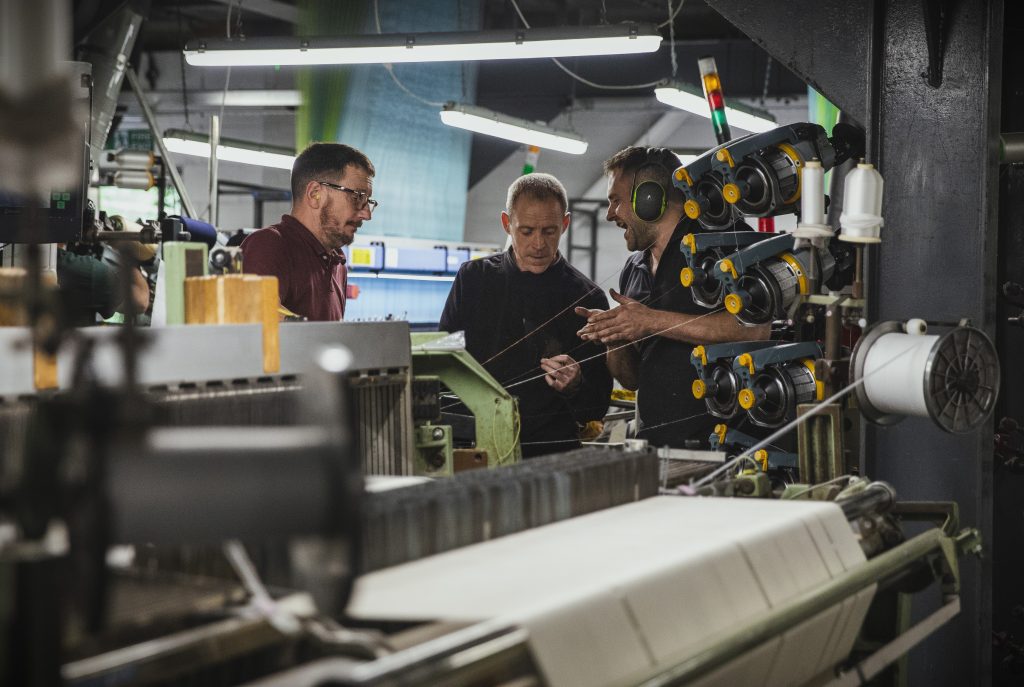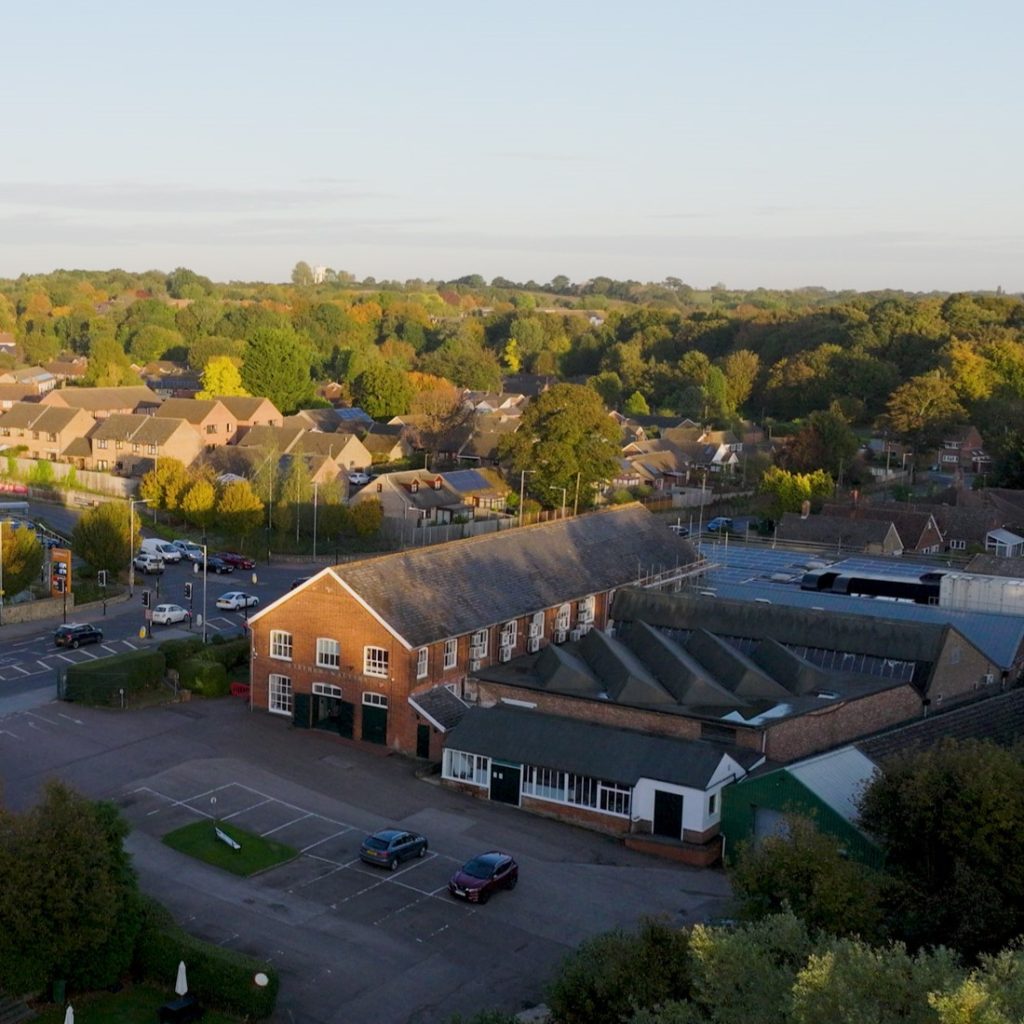David Walters Fabrics was established in 1986 in Suffolk, as a specialist weaver of luxury furnishing fabrics.
However, the family's rich weaving legacy originates back much earlier than this to Spitalfields London in 1720.
Our History
The Walters family business was founded in the silk weaving district of Spitalfields London, by the weaver Benjamin Walters in 1720. Benjamin taught his craft to his son Joseph Walters (1725–1782) who went on to produce loom-woven figured dress fabrics and furnishing fabrics such as brocatelle’s and damasks. By 1825, Joseph’s grandchildren Joseph III (1774–1854), Stephen (1778-1864) and Daniel (1790-1876), divided the company into two separate companies. Stephen Walters specialising in apparel fabrics and Daniel Walters setting up a new furnishings company in Braintree, Essex.
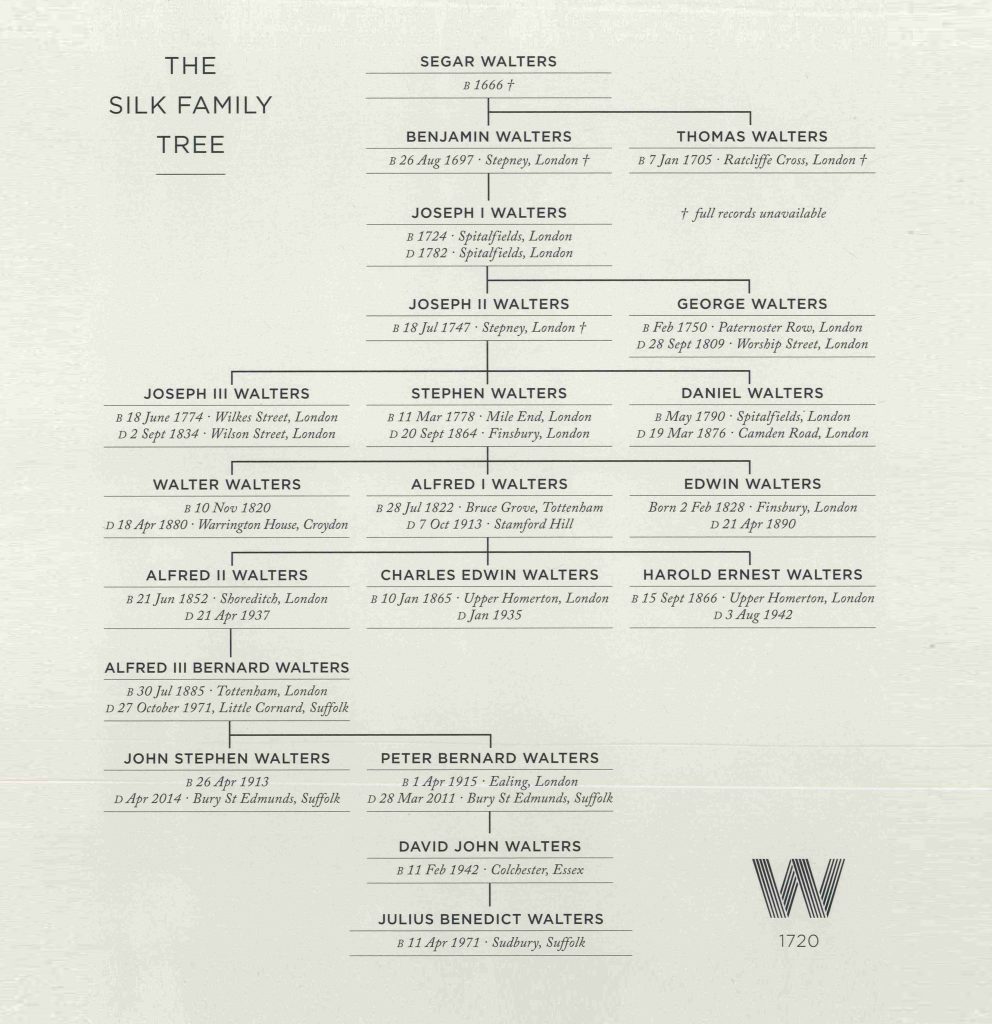
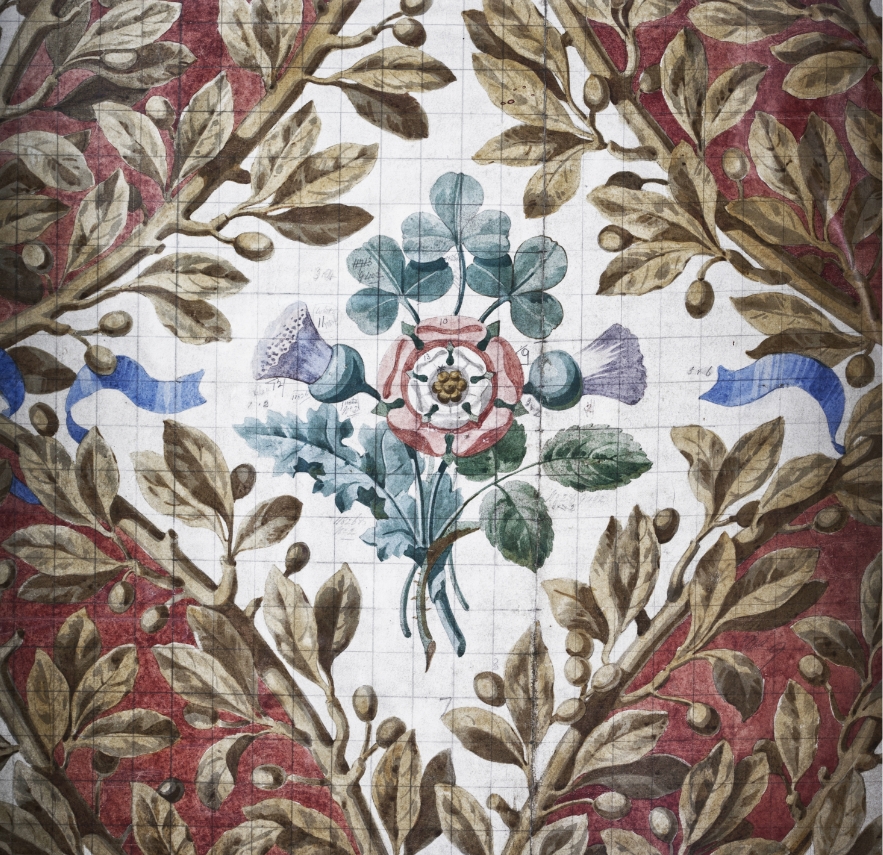
In 1862 Daniel Walters & Sons Ltd was named as the leading British manufacturer of figured silks at the Great Exhibition. Their ‘Thistle and Rose’ fabric, designed by noted textile designer William Folliott won the Gold medal at the Royal society of Arts, and was woven for the Palace ballroom at Buckingham Palace. The business boomed and gained further royal commissions, such as the Prince of Wales’s residence and the Crimson Dining room of Windsor Castle to name a few. However, in 1894 Daniel’s children sold the company to textile manufacturer Warners & Sons.
Lorem ipsum
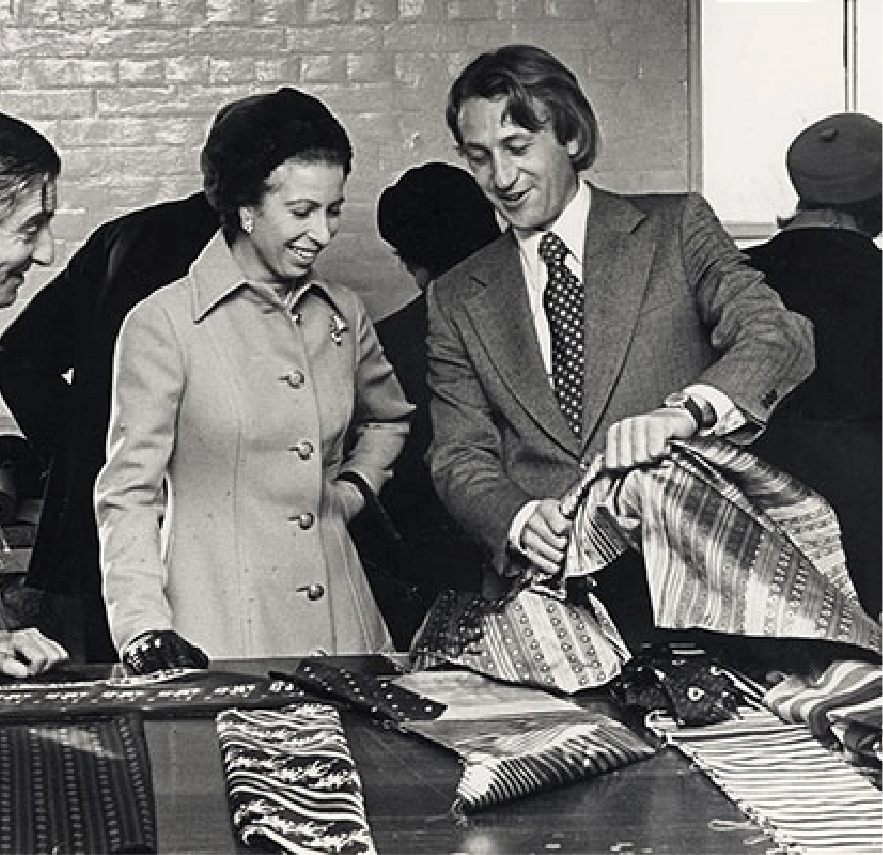
Joseph’s grandchildren Joseph III, Stephen and Daniel, divided the business into two separate companies. Stephen Walters concentrating on apparel fabrics and Daniel Walters focusing on furnishings.
Meanwhile Stephen Walters expanded the apparel business, building new mills across Suffolk and introducing the first powered looms in the 1820’s. Stephen’s son Alfred I (1822-1913) diversified the company into weaving fine umbrella silks, and then in 1900 Alfred II (1852-1937) bought the Sudbury Silk Mills site, where we still remain today. At Sudbury Silk Mills the apparel business continued to prosper, weaving a range of fabrics from black mourning crepe during the reign of Queen Victoria, to parachute silk in the 1940s. During this time Alfred II’s grandchildren, Peter Walters (1915-2011) and his brother John, introduced a range of new fabrics including Spunella for ladies dresses, tuxedo facing fabrics and repp stripes for neckwear. They also held special commissions for ceremonial occasions such as the robe and coach for the coronation of Queen Elizabeth II in 1953
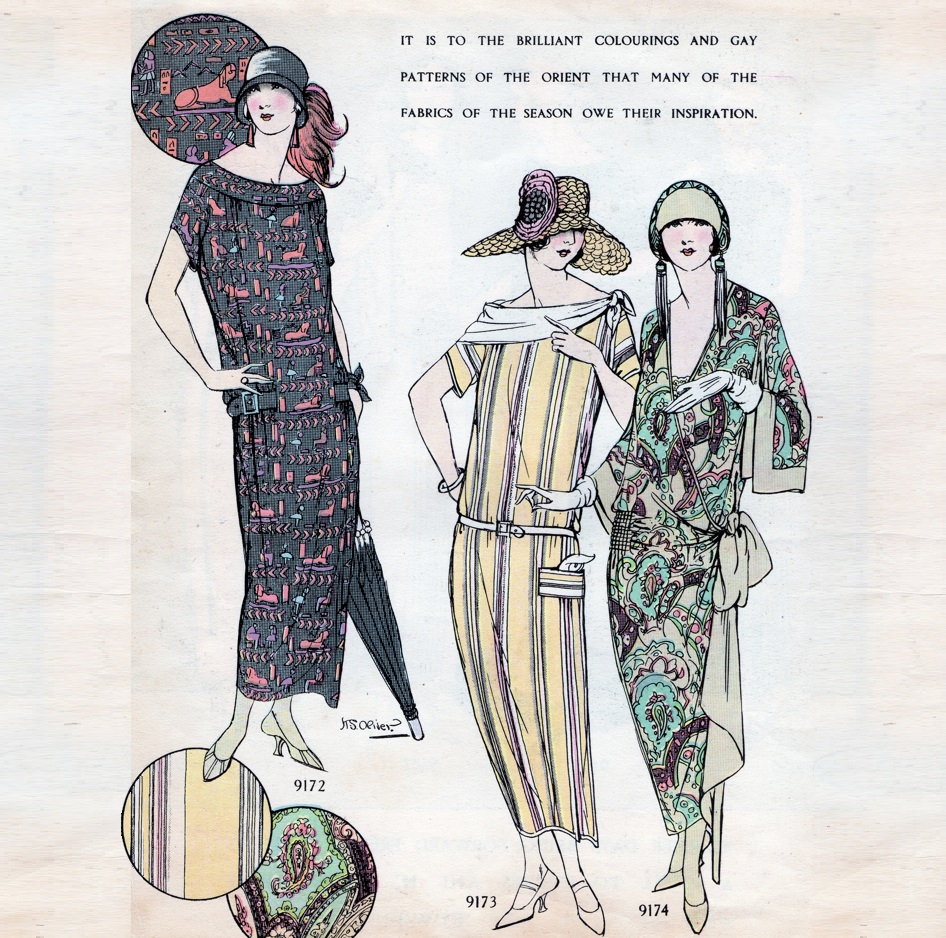
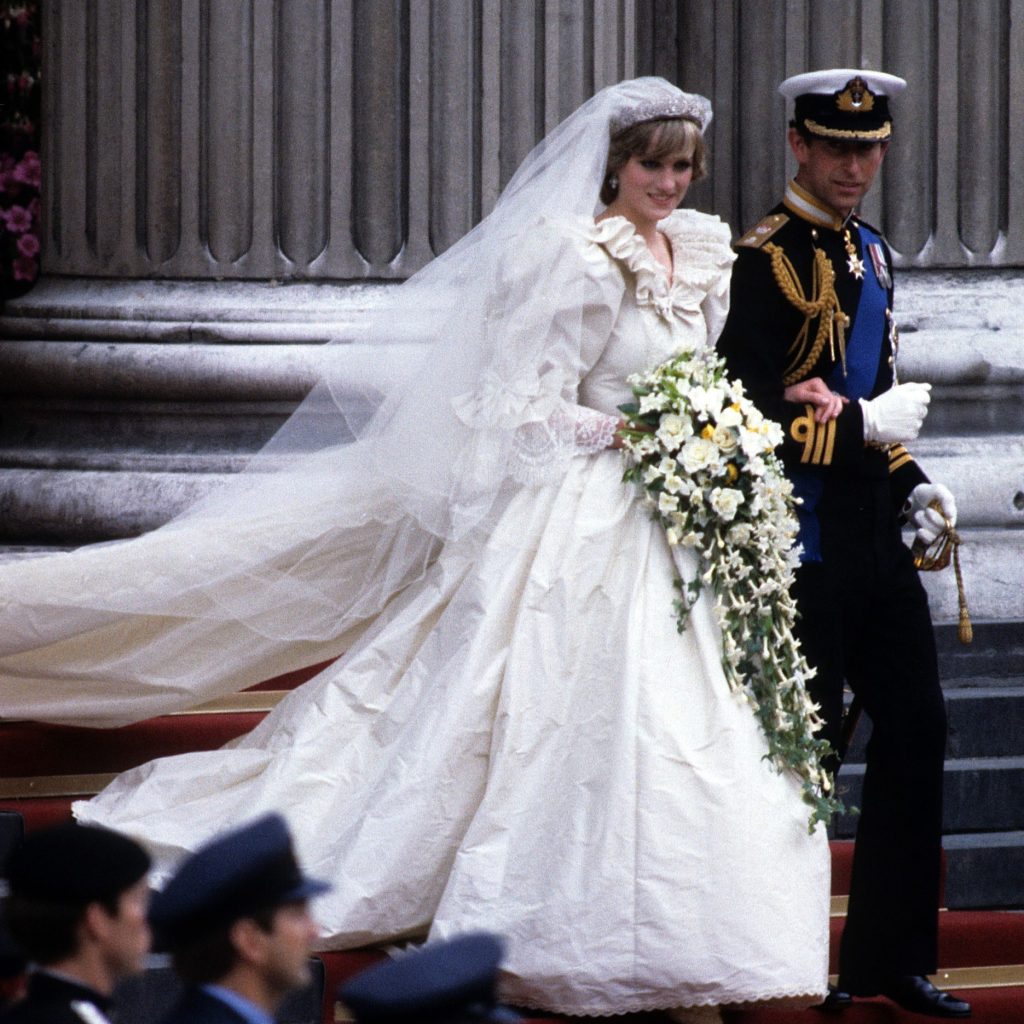
David Walters (1942 – present), son of Peter, pioneered the next step forward with the introduction of rapier Jacquard looms in 1964. While the company still specialised in neckwear and was beginning to re-introduce fabrics for home furnishings, it continued to be commissioned to weave dress fabrics for couturiers and other royal occasions. These included the gown for the investiture of Prince Charles in 1969, the wedding dress for Princess Anne in 1973, and the wedding dress for Lady Diana Spencer in 1981.
By the early 1980’s the Stephen Walters furnishing orders had grown significantly and therefore the family decided to invest in more looms, and in 1986 the start of a new furnishings mill was established just outside Sudbury, in the village of Acton. This is where the story of our company ‘David Walters Fabrics’ begins, eponymously named after the 9th generation of the family, David Walters. The company has continued to build on its international client base, renowned for its attention to detail and quality. Whilst primarily creating fabric collections for interior wholesalers, we continue to weave royal commissions. In 2004 we were honoured to be contacted by master craftsman Jim Frecklington, to design and weave the interior fabric for the late Queen Elizabeth II’s Diamond Jubilee State Coach.
